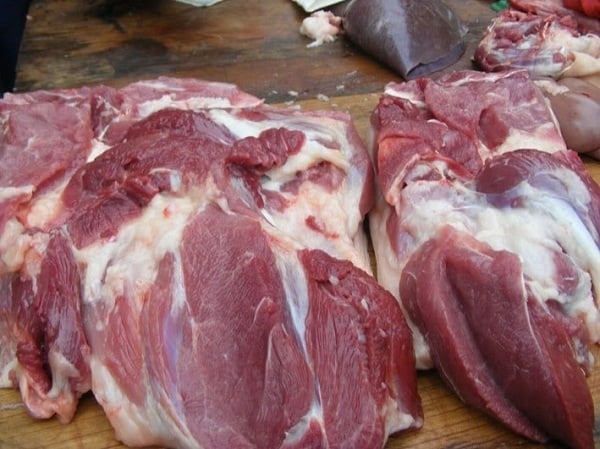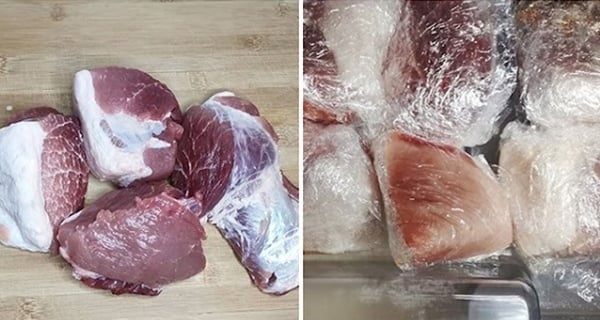Many families often buy meat for storage. However, to ensure fresher and better quality meat, you should not put the meat directly into the refrigerator but should follow these steps:
Step 1: Divide the pork into smaller portions
To ensure the quality of pork when storing, the first step is to divide the meat into smaller portions. If you leave a large piece of meat, when thawing is not complete and you have to refreeze, it will create conditions for bacteria to grow and degrade the quality of the meat.
Therefore, divide the meat into small portions, enough for each meal. This helps you only thaw and use the necessary meat, avoiding waste and ensuring the freshness of the pork during the freezing process.

Step 2: Clean the pork
Pork during the slaughter, transportation, and display at the market is easily contaminated with dust and bacteria. It is best to thoroughly clean the pork before putting it in the refrigerator by soaking the meat in a bowl of water with a little salt, white vinegar, and flour for 20 minutes and then rinse with clean water 2 to 3 times.
Step 3: Dry/wipe the meat
After washing the pork, you must use absorbent paper to wipe the meat dry to prevent moisture from remaining on the meat; when stored, this will destroy the surface structure of the pork, losing its natural flavor.

Step 4: Apply cooking oil to the meat
Use a small brush to apply a layer of cooking oil to the surface of the meat. The purpose is to create a protective film, lock in moisture, and protect the nutrients of the meat; prevent air from coming into contact with the meat, and keep the pork fresh for a longer time.

Step 5: Wrap the meat in plastic wrap
Use plastic wrap or plastic bags to tightly wrap the meat. Ensure completely removing the air inside the wrap by releasing all the air before sealing. If there is still air inside the wrap, it can cause frost formation, leading to loss of moisture and drying out the meat.
After wrapping, place the meat in the freezer compartment of the refrigerator for storage. By completing all of these steps, you will have fresh, tender, and non-dry meat when using it.
Unlocking the Simple Solution to Combatting Odors of All Types of Meat
 Meat‘>
Meat‘>In order to ensure that your meat-based dishes not only taste great, but also do not give off any unpleasant odor, it is essential to find ways to deodorize popular meats such as beef, pork, chicken, and fish.


































